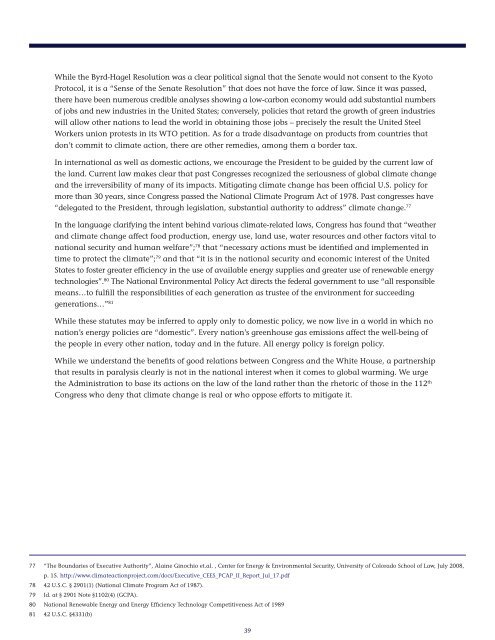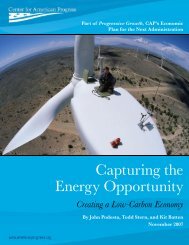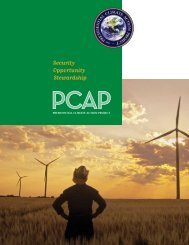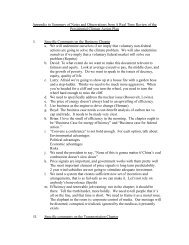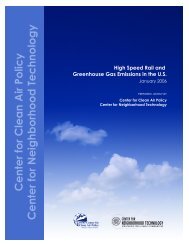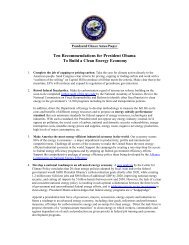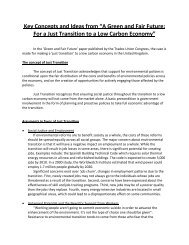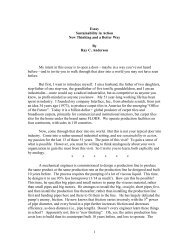The 2011 Plan - Presidential Climate Action Project
The 2011 Plan - Presidential Climate Action Project
The 2011 Plan - Presidential Climate Action Project
You also want an ePaper? Increase the reach of your titles
YUMPU automatically turns print PDFs into web optimized ePapers that Google loves.
While the Byrd-Hagel Resolution was a clear political signal that the Senate would not consent to the KyotoProtocol, it is a “Sense of the Senate Resolution” that does not have the force of law. Since it was passed,there have been numerous credible analyses showing a low-carbon economy would add substantial numbersof jobs and new industries in the United States; conversely, policies that retard the growth of green industrieswill allow other nations to lead the world in obtaining those jobs – precisely the result the United SteelWorkers union protests in its WTO petition. As for a trade disadvantage on products from countries thatdon’t commit to climate action, there are other remedies, among them a border tax.In international as well as domestic actions, we encourage the President to be guided by the current law ofthe land. Current law makes clear that past Congresses recognized the seriousness of global climate changeand the irreversibility of many of its impacts. Mitigating climate change has been official U.S. policy formore than 30 years, since Congress passed the National <strong>Climate</strong> Program Act of 1978. Past congresses have“delegated to the President, through legislation, substantial authority to address” climate change. 77In the language clarifying the intent behind various climate-related laws, Congress has found that “weatherand climate change affect food production, energy use, land use, water resources and other factors vital tonational security and human welfare”; 78 that “necessary actions must be identified and implemented intime to protect the climate”; 79 and that “it is in the national security and economic interest of the UnitedStates to foster greater efficiency in the use of available energy supplies and greater use of renewable energytechnologies”. 80 <strong>The</strong> National Environmental Policy Act directs the federal government to use “all responsiblemeans…to fulfill the responsibilities of each generation as trustee of the environment for succeedinggenerations…” 81While these statutes may be inferred to apply only to domestic policy, we now live in a world in which nonation’s energy policies are “domestic”. Every nation’s greenhouse gas emissions affect the well-being ofthe people in every other nation, today and in the future. All energy policy is foreign policy.While we understand the benefits of good relations between Congress and the White House, a partnershipthat results in paralysis clearly is not in the national interest when it comes to global warming. We urgethe Administration to base its actions on the law of the land rather than the rhetoric of those in the 112 thCongress who deny that climate change is real or who oppose efforts to mitigate it.77 “<strong>The</strong> Boundaries of Executive Authority”, Alaine Ginochio et.al. , Center for Energy & Environmental Security, University of Colorado School of Law, July 2008,p. 15. http://www.climateactionproject.com/docs/Executive_CEES_PCAP_II_Report_Jul_17.pdf78 42 U.S.C. § 2901(1) (National <strong>Climate</strong> Program Act of 1987).79 Id. at § 2901 Note §1102(4) (GCPA).80 National Renewable Energy and Energy Efficiency Technology Competitiveness Act of 198981 42 U.S.C. §4331(b)39


